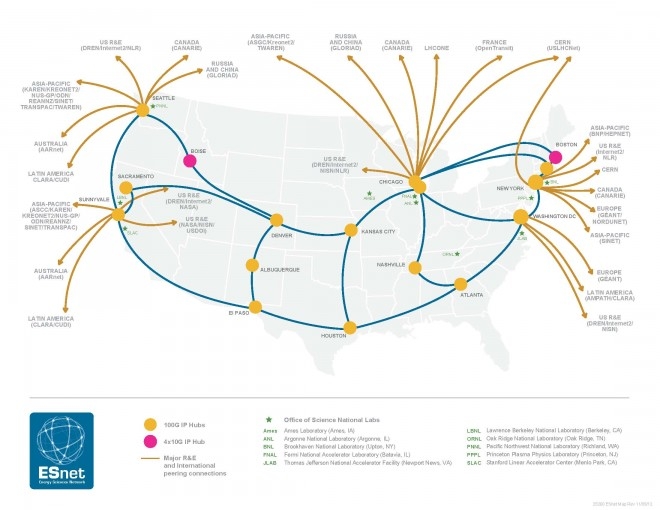Internet speeds have come a long way for the average home user, but in many cases it is still too cumbersome and slow to transfer really large files back and forth. However, this isn't an issue for those who have access to the astonishingly fast Energy Sciences Network (ESnet). Scientists and NASA officials dealing with massive sets of data have access to a shadow network that is 100 times faster than Google's impressive Fiber initiative.
The private pipeline is supervised by the US Department of Energy and has recently demonstrated a cross country data transfer rate of 91 gigabits per second between Denver and Maryland, which is the fastest of its kind ever reported, according to Wired. The network is specifically reserved for what sounds like high level scientific teams that work with data sets from the Human Genome Project and the Large Hadron Collider.

There have previously been faster transfers benchmarked, but they were done over direct connections. Earlier this year Alcatel-Lucent and BT recorded a 1.4 terabit connection between London and Ipswich, but it was a direct one-to-one connection rather than a real world network of connected hubs like seen in the above image.
Wired writes that NASA and other researchers are using ESnet to actually test real world applications. The groups are said to use the blazing fast network to test out networking technologies that could end up on the internet we know, but from the sounds of it we are talking more about advanced scientific level networking tech. ESnet's goal is to push transfers speeds to as high as a terabit per second in the future and has already begun working on a 400 gigabit network.
